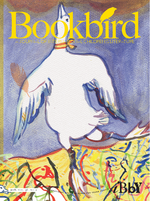Bookbird 2 / 2018
“East Meets West”
Greece, Turkey, and Cyprus are situated geographically, historically, and culturally at a crossroads. This is where Europe and Asia meet. It has been a place of conflict, but also of fruitful and beautiful exchange. Trade, ideas, and people have moved in both directions, creating diverse and multi-layered societies. Today, the still unresolved situation in Cyprus awaits its political resolution. The ongoing refugee crisis, also looms large for people in these countries. The children’s literature of the three countries often reflect this reality. Hence, it comes as no surprise that intercultural competence and representing otherness are common topics and themes. How can one live peacefully side by side? How can children’s literature be part of such a process? These are questions prompted by the historical experience of the people living in these countries. Some of the article authors get to grips with these issues.
We have Angela Yannicopoulou and Ilgım Veryeri Alaca, who write about “The Representation of the Other in Illustrated Texts for Children: Turks in Greek Books and Greeks in Turkish Books.” Kostas Magos talks about how to develop intercultural competence through “the neighbor’s folktales.” And the term “enclavement,” which has long been used to refer to the experience of the few Greek-Cypriots who chose to stay in their homes/villages in the north after the forced division of the island, is picked up by Maria Chatzianastasi in her article about the cultural identity of young Cypriots. There is a great deal more in this rich congress issue.
I am hugely indebted to Petros Panaou for his work on the Congress theme, for which he has also supplied an introduction to Greek children’s literature. My warmest thanks also go to Gülçin Alpöge for her introduction to Turkish children’s literature.
Björn Sundmark


